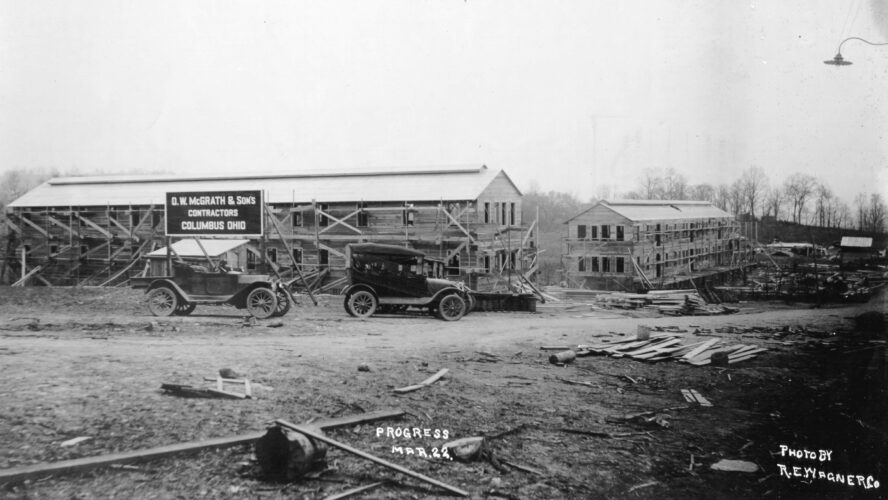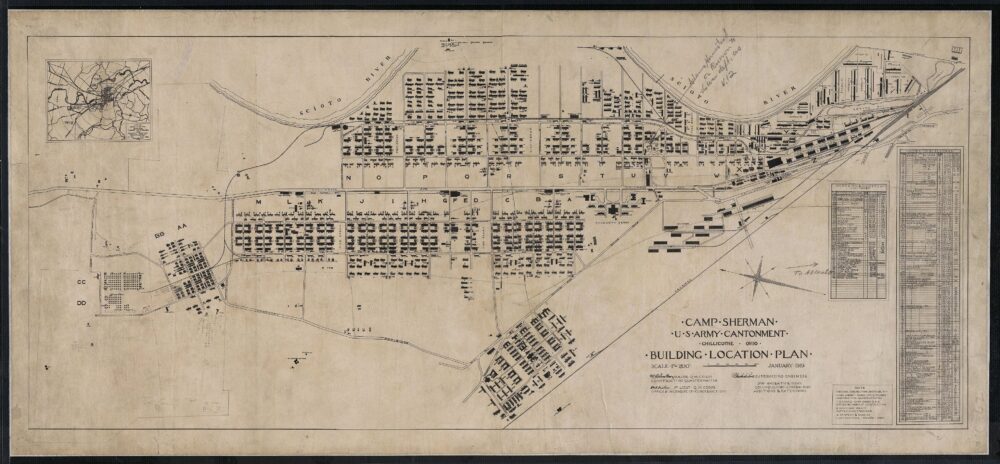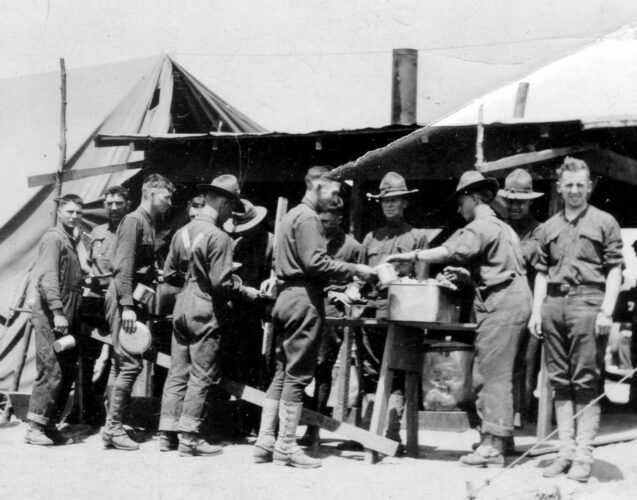Built Fast and Not Meant to Last: What Became of Camp Sherman’s Buildings?

In 1923, President Warren G. Harding created the Mound City National Monument by setting aside a portion of land from Camp Sherman, a World War I training cantonment. What became of the structures built to house and train US troops on the grounds of Camp Sherman?
The United States entered World War I on April 6, 1917. At that time the United States military was not scaled up to the task that lay ahead. By the war’s end, two million soldiers had been trained and shipped to France–no small feat. Camps and cantonments were rapidly constructed around the country to support the need for training and housing troops.

Camp Sherman, just outside of Chillicothe, Ohio, was the third largest of the training camps. Established June 21, 1917, more than 123,000 soldiers trained at Camp Sherman by the war’s end. The cantonment contained nearly 1,400 buildings. Local estimates put the number of structures closer to 2,000. As many as 14,000 tradesmen labored at one time to construct the buildings. A similar story occurred 200 miles southwest of Camp Sherman at Camp Zachary Taylor near Louisville, Kentucky. Construction on the more than 1,500 buildings at Camp Zachary Taylor began on June 22, 1917. Both Camp Sherman and Camp Zachary Taylor became sprawling cities almost overnight.
When the Armistice was declared, demobilization began. Over the next two years, troops returned home from France, passing through many of the same camps and cantonments where they had trained just a few years earlier. By 1920-1921, camps and cantonments were starting to be “broken down.”

A similar phenomenon was seen following the Civil War. Camp Chase in Columbus, Ohio, was a Union recruitment center and training facility. Camp Chase’s buildings included approximately 3.5 million board feet of lumber. At the end of the Civil War, the buildings were disassembled, the lumber loaded on rail cars and shipped 70 miles to the west side of Dayton, Ohio, where it became the original buildings at the Central Branch of the National Soldiers Home.
Buildings on both Camp Zachary Taylor and Camp Sherman were sold at auction. Ohio Valley History, Volume 18, No. 4, Winter 2018 contained an article titled: Camp Zachary Taylor in Filson’s Collections. The Filson Collection includes a newspaper advertisement that appeared in the Louisville Herald in 1921. The ad promoted the purchase of Camp Zachary Taylor Buildings: “… All buildings offered are substantial frame construction, well built, from only the best materials. They can be torn down, moved and re-erected at minimum expense… ” In a similar way, buildings at Camp Sherman were also auctioned off.

The village of Clarksburg, Ohio, is located fifteen miles northwest of Camp Sherman. Clarksburg’s population in 1920 was 420. The Clarksburg Public School District saw an opportunity with the Camp Sherman buildings auction and purchased one for $200.00. The building was disassembled, moved, and reassembled behind the school building in there. The reassembled building was outfitted with a gym floor, stage, and bleachers, and was used for several years. The building hosted the first basketball tournament in Ross County.
I recently met a person who grew up in Clarksburg. I was discussing the Clarksburg School District’s purchase of the Camp Sherman building. She exclaimed, “Oh, the house I grew up in was an old Camp Sherman Building.”
Today, only one of the approximately 2,000 buildings built for Camp Sherman sits on its original location. The rest of the buildings and their lumber is likely scattered over southern Ohio.
As we conclude the World War I Centennial, it is worth taking a moment to think about not only the impact of World War I service of our military, but literally the buildings used for their service. Visit our For Teachers page to view lesson plans and other educational resources relating to Camp Sherman, and the World War I in Ohio Collection on Ohio Memory for more photographs, soldiers’ accounts of Camp Sherman, and much more!
Thank you to Paul LaRue, member of the World War I Centennial Committee, for this week’s post!



Leave a Reply
You must be logged in to post a comment.